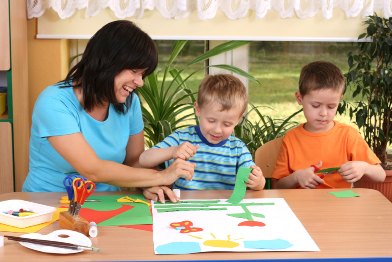Session 4
1. Session 4
Session 4: Guiding Children’s Behaviour
Introduction

© matka_Wariatka/shutterstock
You have just told Kayla (six years) that she needs to put away the bike she is riding—it is clean-up time. She swears at you as she runs off. Michael (26 months) screams, cries, and jumps up and down. There is no room for him at the Play-Doh table. Amanda pushes Jeff onto the cement. Jeff scrapes his arm, and his arm begins to bleed.
Situations like these happen in child care facilities. What can child care providers do to prevent such behaviours? What can child care providers do when behaviours like these occur?
guiding: helping children learn appropriate social behaviour, such as
self-control
The focus of Session 4 is the role of the child care provider in guiding young children’s behaviour. Using your knowledge of the role of child care providers in providing quality care, and your communication and observation skills, you will explore ways of helping children develop self-control while maintaining their self-esteem. Guiding includes prevention and intervention.
Getting Focused Activity: Learning from My Experience
Focus
punishment: controlling behaviour through fear
Punishment is illegal to use in licensed child care programs.
Are the practices of guidance and punishment the same? Do they result in the same learning for children?
Directions
Step 1: Recall an incident when, as a child, you misbehaved at home or at school. Then recall how your parent, guardian, or teacher responded to the incident.
Step 2: Use your memories to complete the Getting Focused Activity: Learning from My Experience.
Important: Not in the mood to respond on paper? Talk to your teacher about recording your responses in another way, such as in an audio recording or video.
Checking In
Save your completed learning activity in the appropriate sub-folder of your course folder.